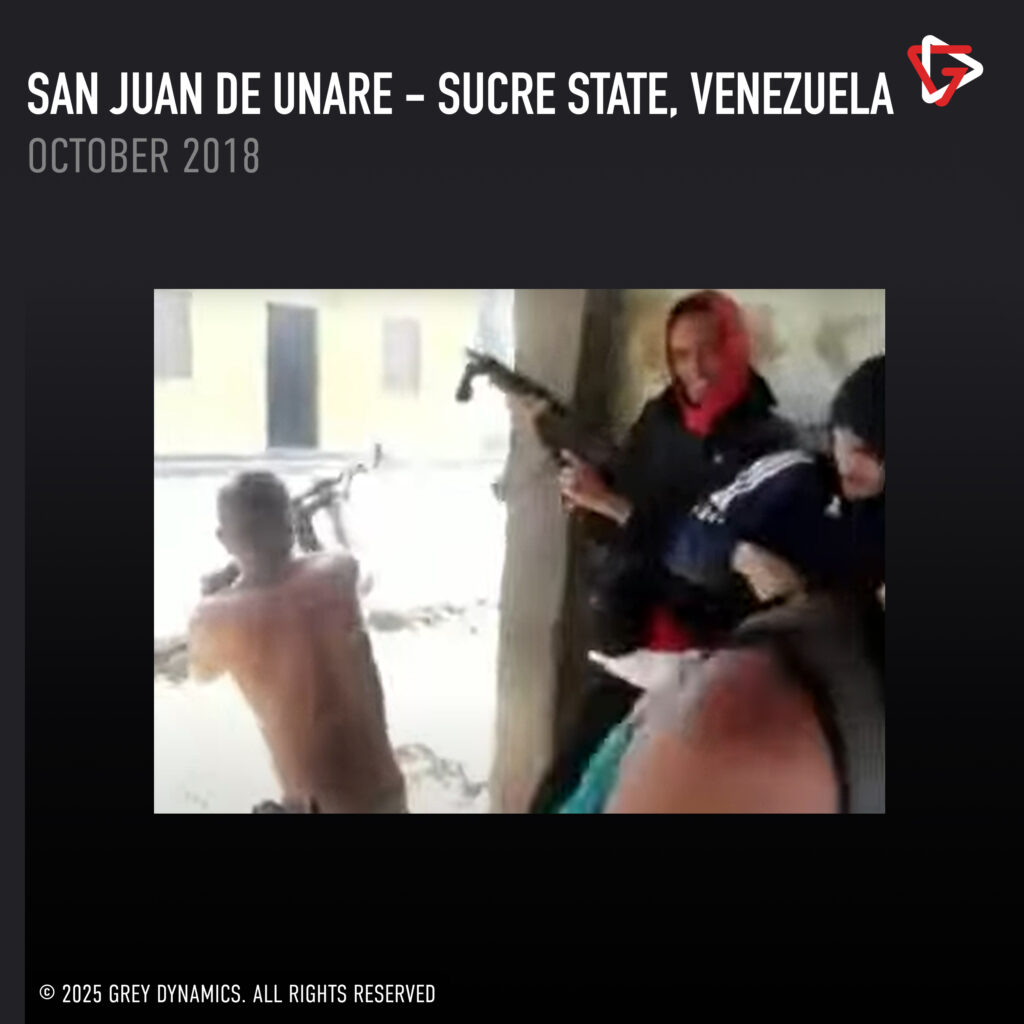1.0 Executive Summary
United States military assets conducted on September 1st a kinetic strike against a Venezuelan civilian vessel suspected of running narcotics in the Caribbean Sea, killing eleven individuals onboard. The White House has not disclosed the evidence that greenlighted the operation, but Grey Dynamics’ ground sources confirm that the vessel was moving narcotics from the Paria Peninsula into Trinidad and Tobago.
Grey Dynamics also partially identified some of the individuals deceased in the operations and surfaced previously undisclosed details surrounding the incident. Cross-checked information from local social media and proprietary assets in the country allows us to assess that the vessel struck was part of a three-boat smuggling convoy with verified relations to the regional underworld
2.0 Destroyed Vessel: Cargo and Destiny
Grey Dynamics sources report, based on conversations with local villagers from Sucre State, that the target boat left Paria Peninsula on the first day of September alongside two other vessels that were carrying narcotics. Publicly Available Information (PAI) obtained from indigenous researchers with contacts inside San Juan de Unare reinforce the reports of a three-vessel convoy. [source]

Venezuelan newspaper CronicaUno reported that after the kinetic strike, a series of funerals were quietly hosted in the Paria Gulf by relatives of the deceased. Additionally, the local outlet—based on personal interviews with community sources—stated on its webpage that the majority of the deceased were former fishermen with deep knowledge of the region who had turned to maritime smuggling. [source]

Undisclosed family members of the deceased seamen stated to the Pitazo media that the vessel was attached to a flotilla carrying narcotics from Paria Peninsula into Trinidad and Tobago. According to the same sources, the destroyed vessel was a “ speedboat of about 12 meters long and 2.5 meters wide, with four 200-horsepower engines” and was closing the convoy formation from behind. [source]
3.0 Individuals On Target and Partial Identifications
The Department of Defence and the White House, one day after the operation, confirmed eleven civilian casualties as a result of the strike. None of the bodies have been recovered, but ground assets with insider knowledge report to Grey Dynamics that seven of the deceased are residents from San Juan de Junare, while the other three are from Los Testigos islands cluster. [source, source, source]

One of the partially identified individuals is Reibys José “The Cat” Gómez Oliveros. “The Cat” is believed by different contacts with local access to be the owner of the vessel or the handler of the shipment, as his father is a local smuggling figure known as Richarth José “El Chapa” Gómez Lugo. Possibly corroborating this information, a protected source of “Pitazo” media stated that “the owner of the boat was controlling the route and knows what happened because his son was on board and was one of the victims.” [source]

Grey Dynamics’ confidential contacts partially identified two other passengers on the destroyed boat by the nicknames “Euclides” and “Leo” without further information. Obtained images from social media accounts across the Paria Peninsula showed villagers from San Juan de Unare and Los Testigos cancelling parties and expressing sadness without compromising names or photos.

4.0 Port of Origin and Regional Context
After identifying the origin of the majority of the deceased individuals and collecting different interviews conducted by local journalists in the same region, we conclude it is highly likely that the speedboat originally departed from San Juan de Unare before being destroyed. We do not have indicators or information that can independently confirm the status of the other two boats.

Additionally, San Juan de Unare is a traditional transit point of narcotics in the Sucre State – Trinidad and Tobago corridor in Eastern Venezuela. During the last decade, the entire region has been controlled by criminal organisations of a paramilitary nature. Combat footage obtained by Grey Dynamics shows Tren del Llano engaging Tren de Aragua in urban combat in the region at an undetermined date.

Local media reports of events in this region during the last nine years highlight violent incidents that include widespread massacres and civilian displacement as a result of narcotics activity. Climax / Estimulo Magazine wrote that state control is largely absent in the area due to corruption or coercion. [source]